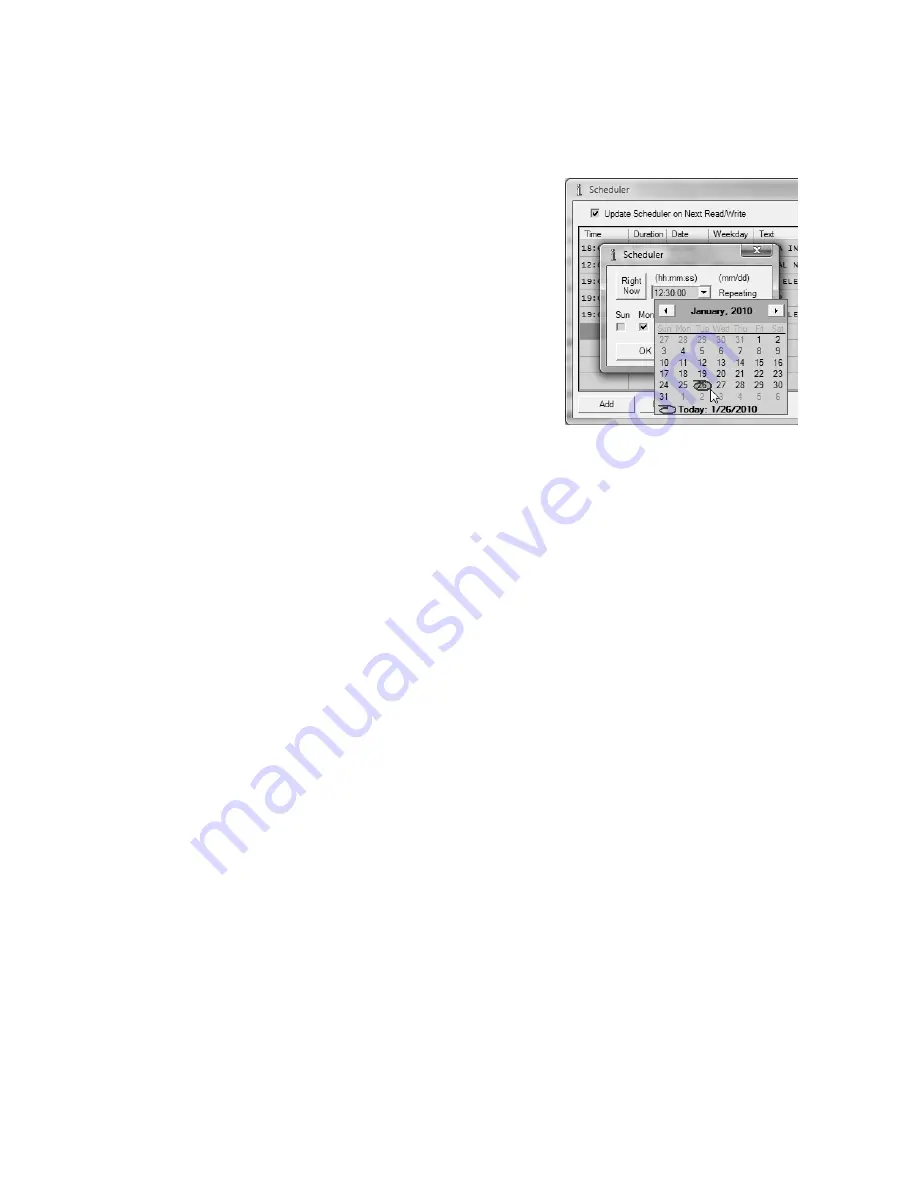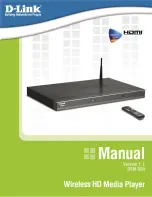
— 36 —
To schedule a one-time event, click the ‘down button’ to the
right of the time display. This pops up a calendar for the cur-
rent month, which may be changed with the left- and right-
facing arrows at the top.
The current date will be circled,
and any day from that point for-
ward may be clicked. Use the left-
and right-facing arrows at the top
of the calendar to change months.
Just as with repeating events, over-
type the starting time of the one-
time event onto the current time.
The duration of the event, in mi-
nutes, may be entered in the
Dura-
tion
column. The scrolling message
for the event, up to 120 characters
in length, is typed into the
Text
col-
umn as shown in the previous illustration. The use of upper-
case letters is recommended for the reasons given on Page 14.
Updating and
Enabling
Scheduled
Events
There are two checkboxes at the top of the Scheduler window.
Update Scheduler on Next Read/Write
must be checked to up-
load scheduled events to 730 Encoder memory, and also to
download scheduled events to a computer other than the one
that was used to originally program the Scheduler, as explained
in the
Scheduler Files
discussion that follows.
Checking the
Enable
box does just that, it instructs the 730
Encoder to observe the uploaded list of scheduled events and
substitute the scrolling text for routine DPS messaging and
specific encoder commands to override permanent settings. If
this box is not checked, scheduled events may still be uploaded
to the encoder, but they will not replace routine messages and
encoder commands at the arranged starting times. The Schedu-
ler may also be enabled or disabled locally with the jog wheel
on Menu 75.
Scheduler Files
The computer creates a small file of scheduled events as they
are entered. This file is automatically saved with the encoder
program file, usually
C:/Program Files/Inovonics/Inovonics 703-
720-730 RDS/schedule.csv
. The next time that the Scheduler is
opened all schedules that have been entered and that remain in
the queue will be displayed. (
.csv
files are ‘comma-separated
value’ files and may be edited using a database program such
as Microsoft Excel instead of the software screen if this is more
convenient.)
If a second computer is used to change the list of scheduled
events, schedule information will not be in residence on that
machine. A
READ
command will duplicate the encoder-resident
schedule listings
on the second computer as long as the
Up-
date Scheduler on Next Read/Write
box is checked. If this exercise
is
not
performed, and a new scheduled event is uploaded to the
730 Encoder from the second computer, only that uploaded















































